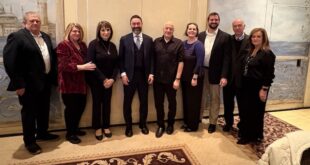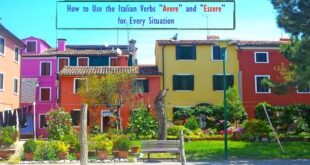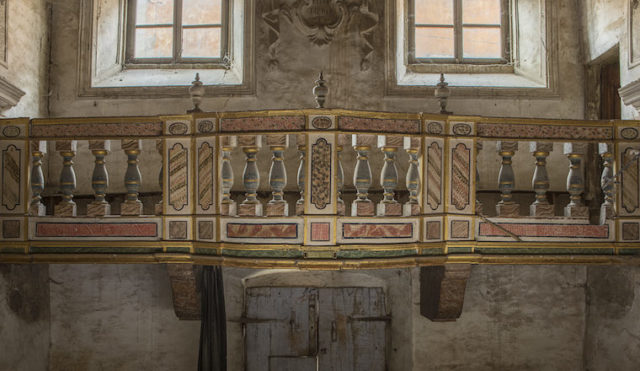
An Italian American language instructor from Nashville, Tenn., Rita Richardson has embarked on a global campaign to restore a gorgeous baroque chapel in a small Tuscan town.
“No one in the U.S. is going to care about your abandoned little church in Italy,” our priest told us. “I wouldn’t waste the time and effort.”
Rather than heed Father’s discouraging counsel, I steadfastly set off on my mission: to save San Filippino, a stunning 17th-century baroque chapel in a little-known town in Tuscany.
Castiglion Fiorentino is a long name for a small town perched on a hill between the Val di Chio and Val di Chiana, about an hour southeast of Florence and two hours north of Rome. A few years ago, my husband, Tim, and I purchased a modest apartment there, in the historic town center. Castiglion Florentino is one of those postcard-pretty medieval villages that travelers just happen upon and end up visiting again and again. Tim and I belong to that lucky group.
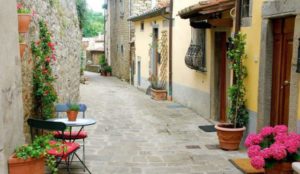
Our little apartment is located on one of the town’s many narrow pedestrian-only streets. Two doors down from us sits sweet San Filippino Chapel — boarded up and forgotten. Its namesake is St. Philip Neri, a 16th-century priest and influential figure in the Counter-Reformation. He is also known as the Apostle of Rome and the Joyful Saint. I confess that before discovering San Filippino Chapel, I had never heard of this extraordinary man. Now, after extensive research on his life and his works, I replay St. Philip’s maxims in my mind daily. “If you wish to go to extremes, let it be in sweetness, patience, humility and charity,” he would say.
St. Philip’s beliefs and teachings are still followed today by the Oratorians, a religious order that he founded. Like St. Philip, the Oratorian brothers are known for bringing religious and lay people together to pray, laugh and have fun, to grow spiritually, and to serve the underprivileged.

Knowing about the Oratorians, it’s easy to imagine the now abandoned San Filippino as a bustling, thriving community center in the 17th and 18th centuries, as a place where ordinary people did and experienced extraordinary things. Now, though, its crumbling exterior blends into a larger palazzo and hides behind recycling bins and parked cars. Like the chapel, the priests’ living quarters in the rear of the building are off-limits as well. The small complex goes unnoticed by passersby. Ask a citizen of the town where Oratorio San Filippino is located, and they’ll likely tell you they’ve never heard of it.
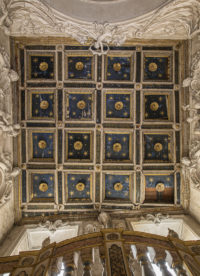
(Photo by Juri De Luca)
For three years, after arriving in Castiglion Florentino, Tim and I walked past the sad structure of San Filippino and saw that the only thing progressing was the degradation. Why was this building so rich in history and beauty being allowed to disappear? Why wasn’t anyone doing anything to save it? The response: “Crisi. Niente soldi.” Economic crisis. No money. San Filippino is just one of the countless precious treasures we’re losing all over Italy.
One day, for a reason that is difficult to explain, I realized that the “someone” to save San Filippino was me and, by default, my husband. Neither Tim nor I had ever attempted anything like this, and at this point, we had not even seen the interior of the chapel. So convincing my husband that my epiphany was a great idea was going to have to be my first miracle.
“There are plenty of Italian Americans in the U.S. — especially those of Tuscan heritage — who will want to help their beloved motherland,” I asserted confidently. “We’ll create a nonprofit to raise funds in America to restore the chapel and open it once again.”

(Photo by Juri De Luca)
After one meeting in Arezzo with a very happy and grateful Archbishop Riccardo Fontana, we found ourselves inside San Filippino. Simply put, we were blown away. We saw surprisingly beautiful cherub sculptures that are some of the finest examples of baroque art in Tuscany. An ancient 15th-century wooden coffered ceiling of stunning cobalt blue and gold said to be the oldest in the town. A gorgeous hand-painted wooden balcony comprising the choir. Intact frescoes. And that’s just for starters. Yes, there’s obvious damage and decay due to decades of neglect, a leaky roof, and large amounts of excrement from pigeons that have found their way in via the broken windows. Nonetheless, the chapel is still stunning, and we have fortunately arrived just in time to save it and return it to its original glory.
Per the official estimate provided by the Archdiocese of Arezzo, it would take $350,000 to arrest the decay and deterioration and restore San Filippino to its original condition. Once restored, the chapel will once again host religious and secular services for local residents, as well as visitors and art history lovers. It will be that special place for a wedding, concert, or baptism which would provide a much-needed economic spark for Castiglion Fiorentino.
Phase II will require an estimated $250,000. This will restore and update the apartments upstairs, providing comfortable accommodations for visiting priests, scholars, artists and pilgrims of all kinds (including people like you, dear reader).
In July of 2015, Friends of San Filippino was granted 501(c)(3) tax-exempt nonprofit status. One hundred percent of donations go toward the restoration. We have no paid staff; all work is done by volunteers.
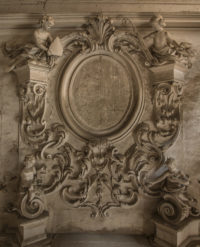
(Photo by Juri De Luca)
Most of our volunteers are citizens of Castiglion Florentino. Once word spread about the American lady saving the church (I’m actually a proud Italian American with Tuscan roots), the townspeople rallied. Professionals — accountants, photographers, engineers, and business owners, among others — have graciously donated their services; local artists are donating their works, with proceeds benefitting the project; and a sister organization — Amici di San Filippino — was soon formed, making it easier for citizens of Castiglion Florentino to raise funds for our cause.
It has been heartening and encouraging, to say the least, to receive so many acts of kindness, donations, prayers and words of support from caring individuals who have read or heard the story of San Filippino. We’re off to a good start! The reality, though, is that we’ve still got a lot of fundraising to do before restoration work can begin. While the funds trickle in, the rains continue to pour down on San Filippino’s leaky roof, and the precious treasures inside continue to deteriorate.
Admittedly, there are many nights I lie awake, privately panicking that the opportunity to restore and rescue this hidden jewel is relentlessly slipping away.
Sometimes in those fretful moments, the words of caution from our friend, the priest, come to mind. When they do, I take a deep breath and remember the traits that St. Philip Neri encouraged — Patience, Charity, Humility — and my favorite of all his maxims: “Be good if you can.”
And then, calmed and centered once again, I think about all the unexpected gifts I’ve received from this project, including lessons learned. I’ve learned to persevere in the face of negativity and disinterest. I’ve learned that not everyone is ready or able to respond to a particular deserving cause, and that’s OK. We’ll find the people who are.
Perhaps most importantly, I’ve learned to keep my faith in the worthiness of our mission and in the goodness of people.
For details, visit www.friendsofsanfilippino.org or the Save San Filippino Facebook page.
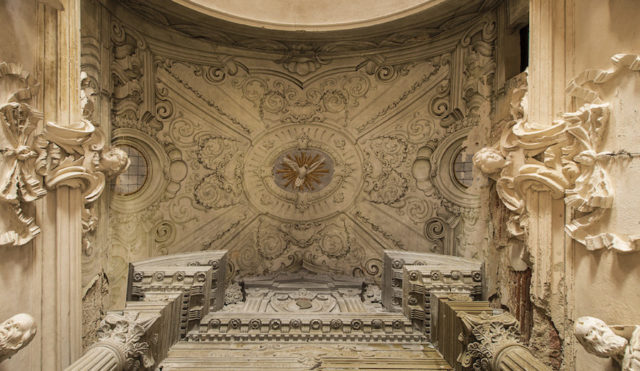
The above appeared in the March issue of the print version of Fra Noi. Our gorgeous, monthly magazine contains a veritable feast of news and views, profiles and features, entertainment and culture. To subscribe, click here.
 Fra Noi Embrace Your Inner Italian
Fra Noi Embrace Your Inner Italian


